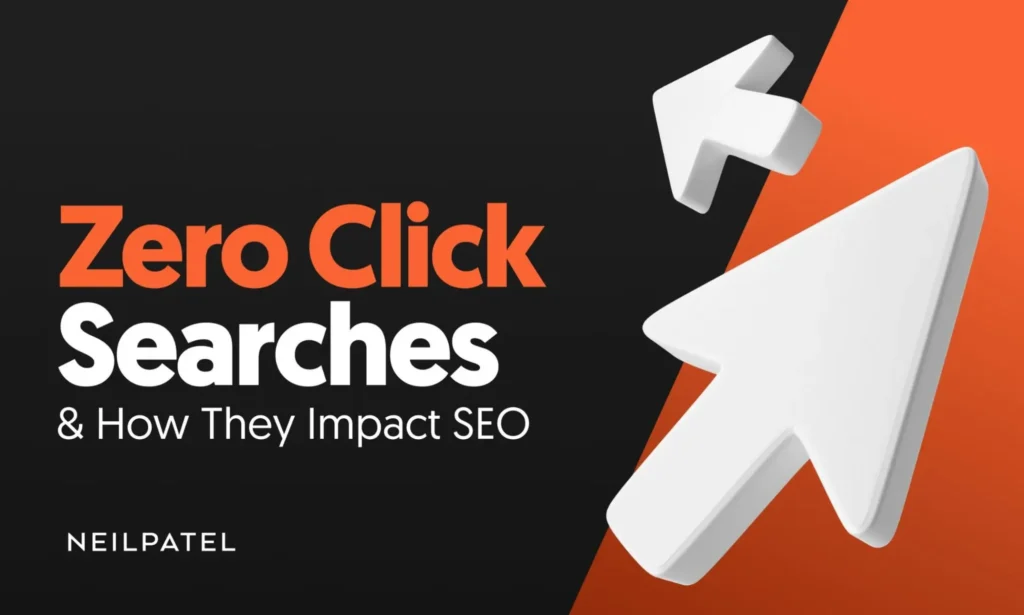
In the world of SEO, visibility has always been the name of the game. But what happens when more and more users find what they need without ever clicking through to a website?
Welcome to the era of zero-click searches.
As search engines evolve—especially Google—more answers are being delivered directly on the search results page (SERP). Whether it’s featured snippets, local packs, knowledge panels, or AI-generated answers, users often get the information they want without ever clicking a link.
For businesses, this shift poses a critical challenge: How do you win in SEO when clicks are no longer guaranteed?
Let’s explore what zero-click searches are, why they matter, and how to adapt your strategy to stay relevant—and visible—in a click-less future.
What Are Zero-Click Searches?
Zero-click searches are search queries that result in an answer directly on the SERP, with no need for the user to click on any of the links.
Some examples include:
- Featured Snippets (answer boxes at the top)
- Knowledge Panels (Google’s database results for people, places, and things)
- Google Maps / Local Pack (especially for “near me” searches)
- Instant Answers (like weather, sports scores, currency conversions)
- People Also Ask boxes
- Search Generative Experience (SGE) and AI snapshots
According to data from SparkToro and Similarweb, over 50% of Google searches end without a click.
Why Is This Shift Happening?
Google’s primary goal is to enhance user experience—which means reducing friction and providing faster answers.
Three major trends are driving the shift:
- Mobile-first behavior: Users want instant information on the go.
- Voice search: Short, conversational queries demand quick, concise answers.
- AI-enhanced search: Google’s SGE and Bing’s AI results summarize content directly in SERPs.
This doesn’t mean SEO is dying—it’s evolving. The new goal is to own the SERP real estate, even if you don’t get the click.
How to Adapt: 6 Strategies for Zero-Click SEO
1. Target Featured Snippets
Featured snippets are prime real estate. Google often pulls them from pages that:
- Use clear headers (H2/H3) for questions
- Answer questions directly, in 40–60 words
- Use lists, tables, or bullet points
Tip: Use tools like SEMrush, Ahrefs, or Surfer SEO to find featured snippet opportunities you can target.
2. Optimize for “People Also Ask” (PAA)
Google’s “People Also Ask” boxes are a goldmine for visibility. These questions are closely related to user intent and are ripe for optimization.
How to win:
- Include a FAQ section on key pages
- Use structured markup (FAQ Schema)
- Answer related questions in a clear, concise format
3. Embrace Structured Data & Schema Markup
Schema helps search engines understand your content and display it with enhanced rich results.
Key types to implement:
- FAQ
- How-To
- Product
- Review
- Local Business
- Article/BlogPosting
Use Google’s Rich Results Test to validate your schema implementation.
4. Double Down on Brand Visibility
If clicks are declining, brand recognition becomes more important than ever. When your content shows up—even if it’s not clicked—you still earn brand equity.
How to boost brand presence:
- Appear in top SERP features
- Get mentioned in third-party sites and aggregators
- Build a strong Google Business Profile
- Prioritize E-E-A-T (Experience, Expertise, Authoritativeness, Trust)
5. Own Your Local Pack
For local businesses, zero-click is common—but still valuable. A strong Google Business Profile helps you appear in Maps, reviews, and local searches.
Optimize by:
- Keeping NAP (name, address, phone) accurate
- Adding business categories, hours, and photos
- Generating positive reviews consistently
- Posting updates directly to your profile
6. Create Content That Supports Generative Search
As AI search becomes mainstream (especially with Google’s SGE and Bing AI), content needs to be:
- Clear and well-structured
- Authoritative and cited
- Focused on topical depth, not just keywords
Creating pillar content, FAQs, and trusted sources increases the chance of your content being surfaced—even in AI answers.
Measuring Success Without Clicks
Adapting to zero-click means shifting your KPIs. Traditional CTR might drop, but other signals still matter:
- Impressions (via Google Search Console): Are you gaining visibility?
- Brand searches: Are more users searching for your brand directly?
- Engagement metrics (scroll depth, time on page): Do people who do click find value?
- Conversions from indirect sources: Are users coming later via branded or referral traffic?
Final Thoughts
Zero-click doesn’t mean zero opportunity. In fact, it’s a chance to dominate the SERP in new ways—through authority, visibility, and smart content strategies.
The businesses that win in this environment won’t just chase clicks. They’ll focus on being the answer, not just the next option.
TL;DR:
To thrive in a zero-click world:
- Win featured snippets and PAA boxes
- Use structured data to power rich results
- Strengthen brand and local visibility
- Optimize for AI and voice search
- Focus on impressions, not just CTR
Zero-click searches are here to stay. But with the right strategy, you can still win the attention game.
